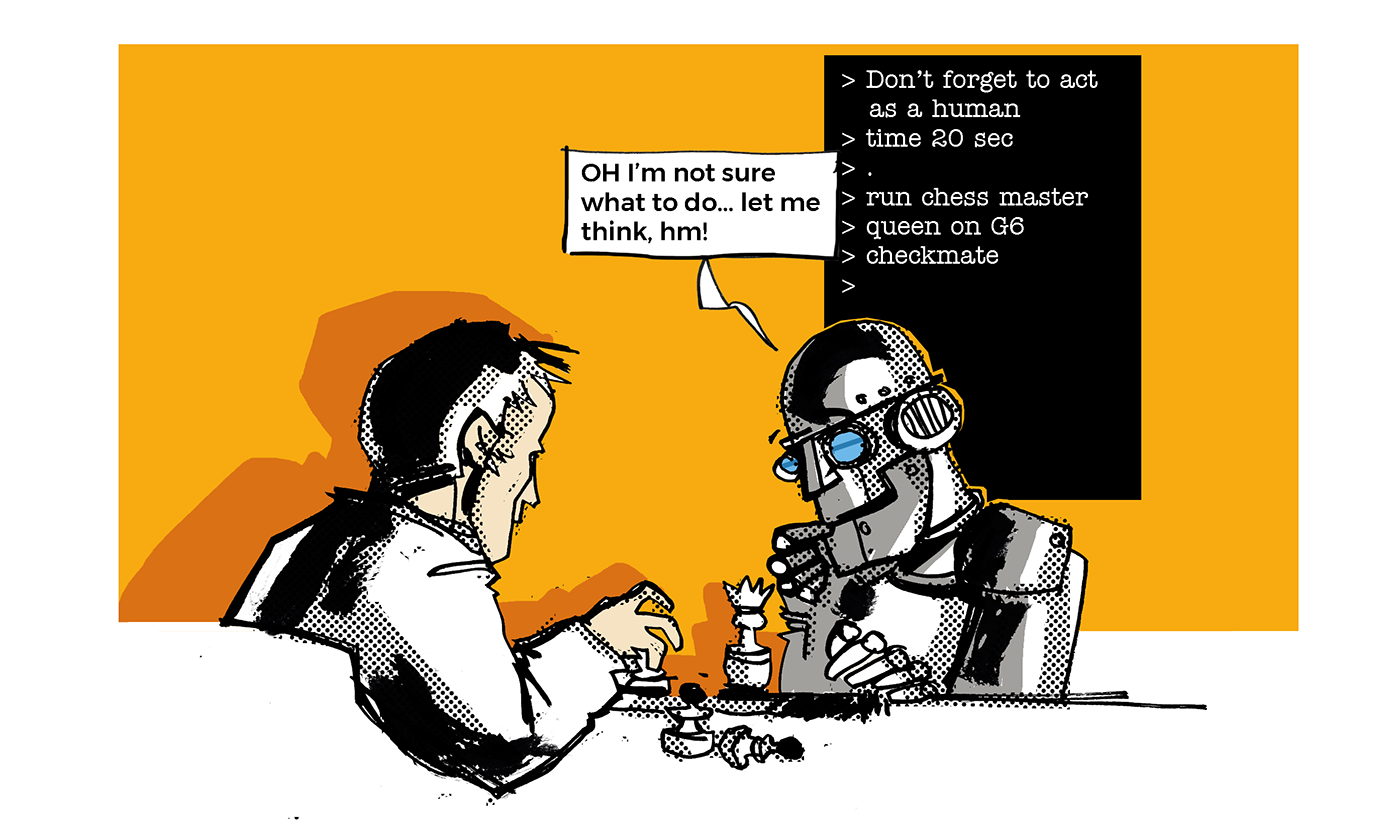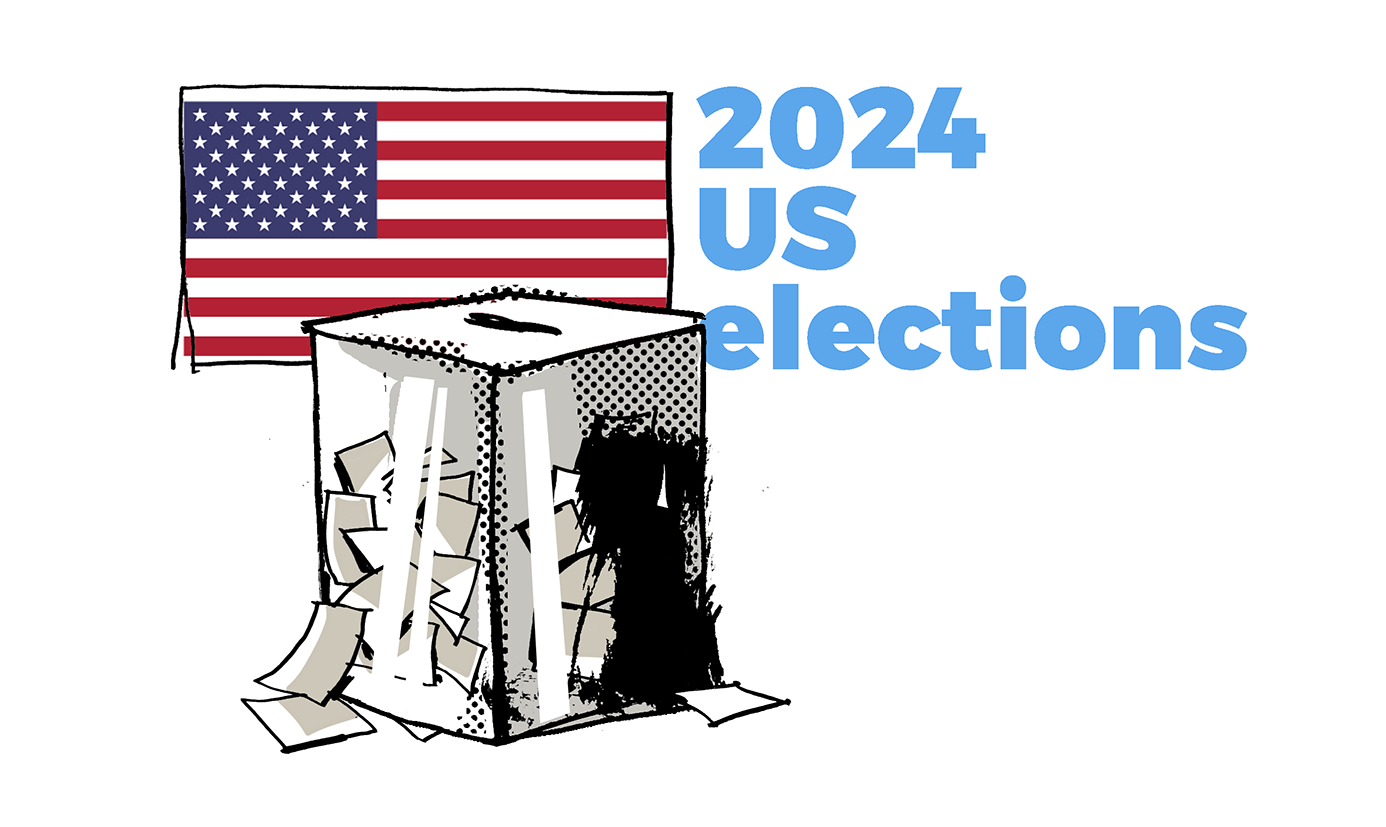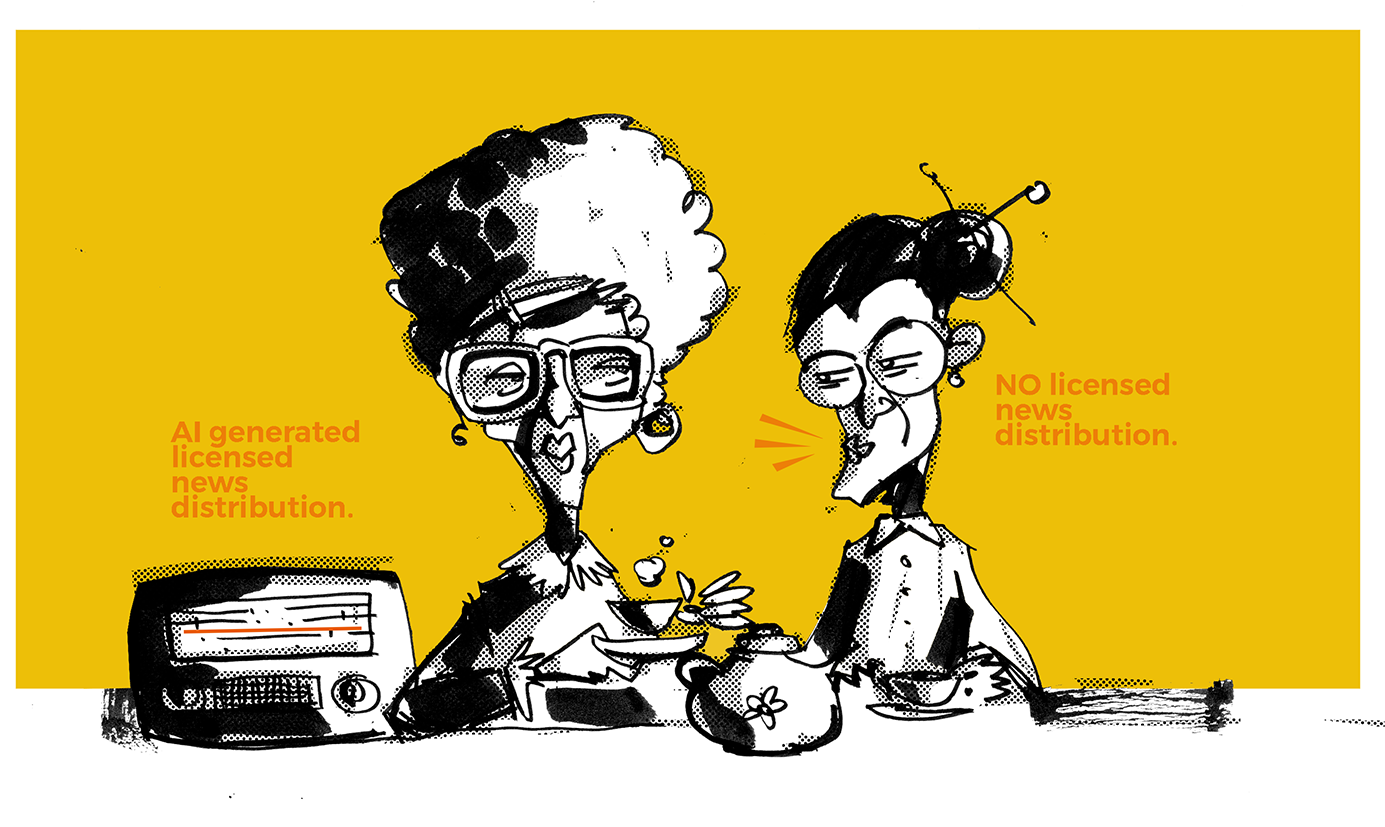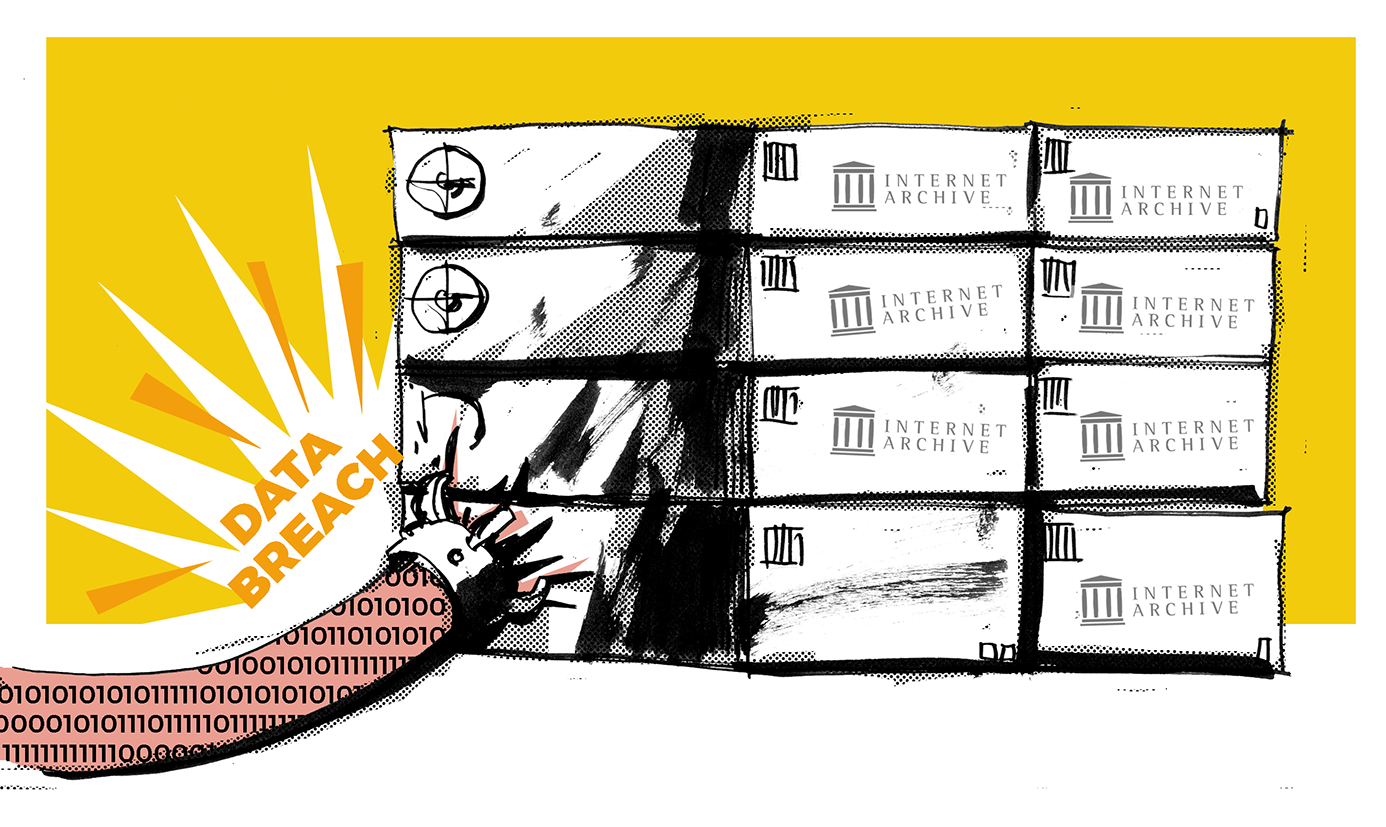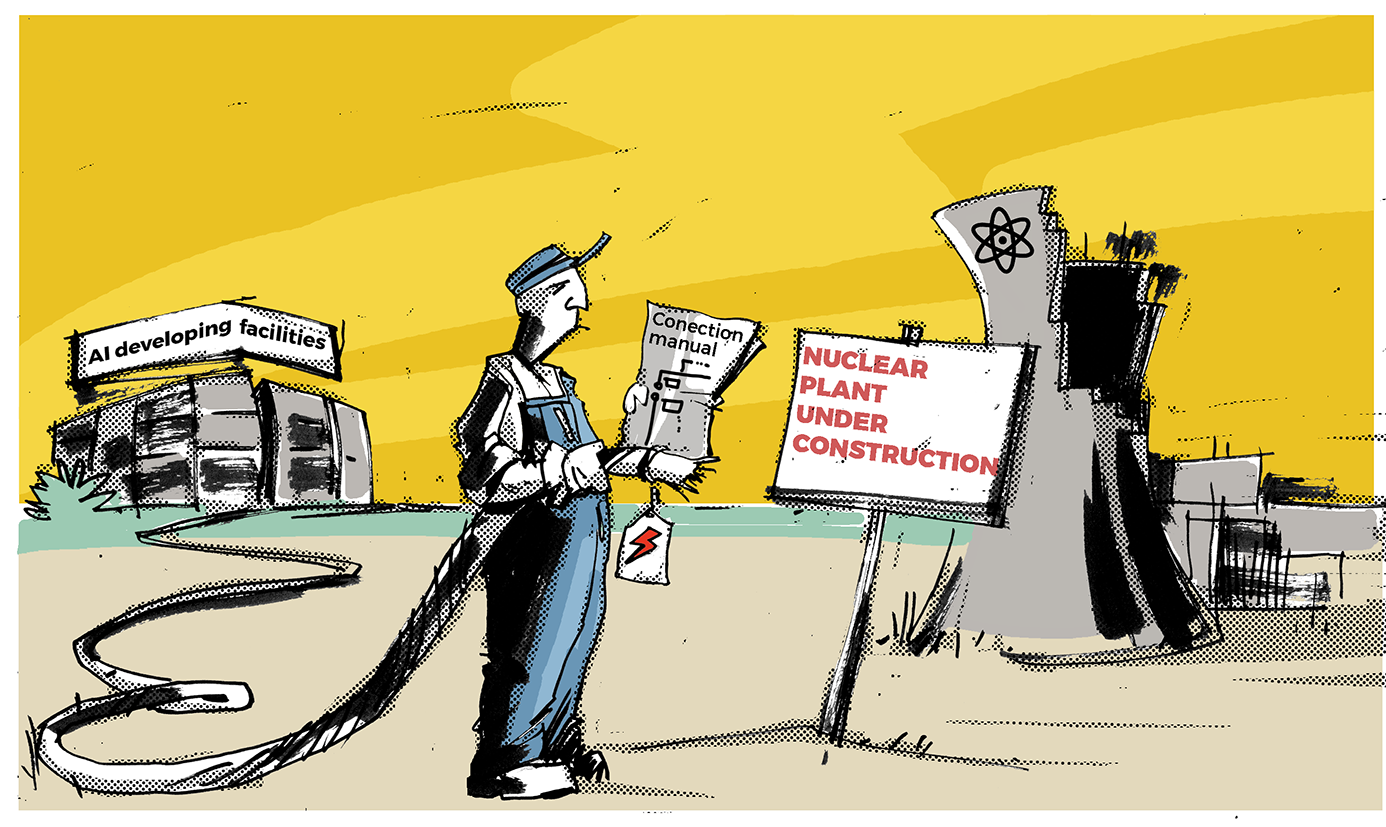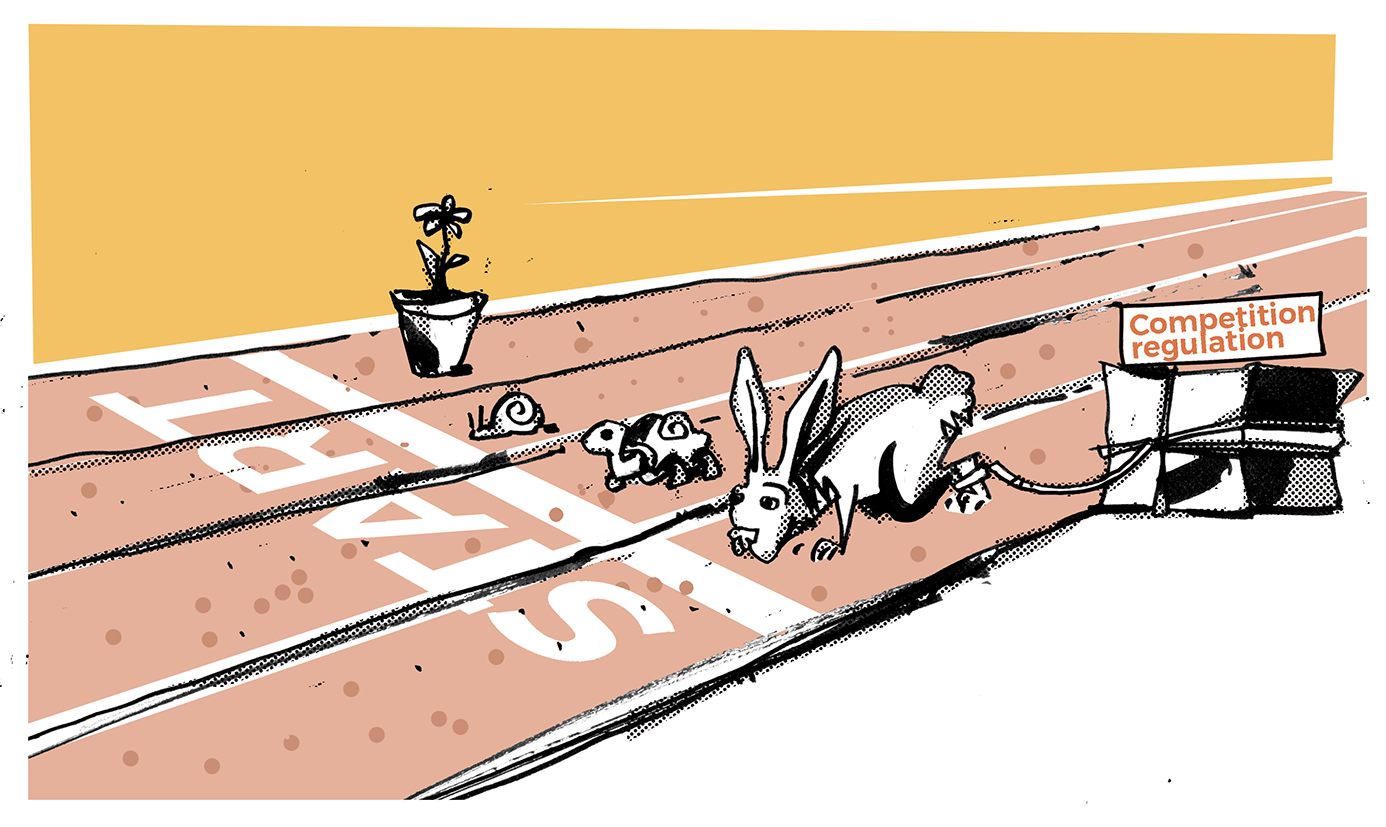
Clin d’oeil
Coup d’oeil : Les développements qui font des vagues
Gouvernance de l’IA
Le ministère américain de l’Energie (DOE) et le ministère américain du Commerce (DOC) ont uni leurs forces pour promouvoir le développement sûr, sécurisé et fiable de l’IA par le biais d’un protocole d’accord récemment établi.
Une récente évaluation de certains des meilleurs modèles d’IA a révélé des lacunes importantes en matière de conformité aux règlements de l’UE, notamment en ce qui concerne la résilience en cybersécurité et la prévention des résultats discriminatoires. L’étude réalisée par la startup suisse LatticeFlow, en collaboration avec des fonctionnaires de l’UE, a testé des modèles d’IA générative provenant de grandes entreprises technologiques telles que Meta, OpenAI et Alibaba.
Technologies
Trois scientifiques, David Baker, John Jumper et Demis Hassabis, ont reçu le prix Nobel de chimie 2024 pour leurs travaux pionniers dans le domaine de la science des protéines. David Baker, de l’université de Washington, a été récompensé pour ses innovations en matière de conception computationnelle de protéines, tandis que John Jumper et Demis Hassabis, de Google DeepMind, ont été reconnus pour avoir utilisé l’IA afin de prédire la structure des protéines.
Le scientifique américain John Hopfield et le Britanno-Canadien Geoffrey Hinton ont reçu le prix Nobel de physique 2024 pour leurs travaux révolutionnaires en apprentissage automatique, qui ont largement contribué à l’essor de l’IA.
Au Japon, les entreprises se tournent de plus en plus vers l’IA pour gérer les services à la clientèle, afin de remédier à la pénurie de main-d’œuvre dans le pays. Ces systèmes d’IA sont désormais utilisés pour des tâches plus complexes, afin d’aider les travailleurs de divers secteurs.
La Russie a annoncé une intensification notable de l’utilisation de drones dotés d’une intelligence artificielle dans ses opérations militaires en Ukraine. Le ministre russe de la Défense, Andreï Belousov, a souligné l’importance de ces drones autonomes dans les tactiques de champ de bataille, affirmant qu’ils sont déjà déployés dans des régions clés et qu’ils ont fait leurs preuves dans des situations de combat.
Des chercheurs chinois de l’université de Shanghai affirment avoir fait une percée significative dans le domaine de l’informatique quantique, en revendiquant avoir percé les algorithmes de cryptage couramment utilisés dans le secteur bancaire et celui des crypto-monnaies.
Infrastructure
La concurrence entre Elon Musk et Mukesh Ambani s’intensifie alors qu’ils se battent pour dominer le marché émergent du haut débit par satellite en Inde.
Un groupe de grandes entreprises technologiques, dont Microsoft, Alphabet, Meta et Amazon, a proposé de nouvelles conditions pour le paiement des besoins énergétiques des centres de données de l’Ohio.
Siemens compte sur sa plateforme numérique, Xcelerator, pour stimuler sa croissance future, en particulier dans le domaine de l’automatisation des usines, confronté à un ralentissement de la demande en Chine et en Europe.
Une cour d’appel fédérale américaine a exprimé des doutes quant à l’autorité de la Commission fédérale des communications pour rétablir les règles de neutralité du réseau.
Cybersécurité
Six sénateurs démocrates ont demandé à l’administration Biden d’aborder les questions essentielles des droits de l’Homme et de la cybersécurité lors de la prochaine convention des Nations unies sur la cybercriminalité, qui doit faire l’objet d’un vote à l’Assemblée générale des Nations unies.
Selon une récente estimation de la menace, l’agence canadienne de renseignement électromagnétique a identifié les activités de piratage de la Chine comme la plus importante menace cybernétique d’État à laquelle le pays est confronté.
La Russie utilise l’IA générative pour intensifier ses campagnes de désinformation contre l’Ukraine, a averti le vice-ministre ukrainien des Affaires étrangères, Anton Demokhin, lors d’une cyberconférence à Singapour.
Le rapport 2025 « Predictions » de Forrester présente les principaux défis en matière de cybersécurité, de risques et de protection de la vie privée à venir. Le coût de la cybercriminalité devrait s’élever à 12 000 milliards de dollars d’ici à 2025, tandis que les autorités de régulation intensifient leurs efforts pour protéger les données des consommateurs.
Droits numériques
Le code de bonnes pratiques contre la désinformation de l’UE, élaboré en 2022, deviendra bientôt un ensemble de règles formelles dans le cadre de la loi sur les services numériques (Digital Services Act, DSA).
Le Consumer Financial Protection Bureau (CFPB) a informé Meta de son intention d’envisager une « action en justice » concernant les allégations selon lesquelles le géant de la technologie aurait acquis de manière inappropriée des données financières de consommateurs auprès de tiers pour ses opérations de publicité ciblée.
Juridique
Le détaillant en ligne chinois Temu envisage de rejoindre une initiative menée par l’Union européenne pour lutter contre les produits de contrefaçon, à laquelle participent de grands distributeurs tels qu’Amazon et Alibaba, ainsi que des marques comme Adidas et Hermès.
L’agence sud-coréenne de protection des données a infligé une amende de 21,62 milliards de KRW (15,67 millions de dollars) à Meta Platforms, le propriétaire de Facebook, pour avoir collecté de manière inappropriée des données sensibles sur les utilisateurs et les avoir partagées avec des annonceurs.
Sept familles françaises poursuivent TikTok en justice, affirmant que l’algorithme de la plateforme a exposé leurs enfants adolescents à des contenus préjudiciables, ce qui a eu des conséquences tragiques, notamment le suicide de deux jeunes de 15 ans.
Le Kremlin a demandé à Google de lever les restrictions imposées aux diffuseurs russes sur YouTube, en mettant en avant les actions en justice de plus en plus nombreuses contre le géant de la technologie comme levier potentiel.
Économie de l’internet
World Liberty Financial, un projet de crypto finance décentralisée (DeFi) associé à l’ancien président Donald Trump et à ses fils, prévoit de limiter ses ventes de jetons à 30 millions de dollars à l’intérieur des États-Unis.
Le ministre italien de l’Économie, Giancarlo Giorgetti, a défendu son projet d’augmenter les taxes sur les gains en capital des crypto-monnaies dans le cadre du budget 2025 du pays, malgré l’opposition des membres de son propre parti, la Ligue.
La Banque d’État du Pakistan (SBP) a proposé un cadre important pour reconnaître les actifs numériques, y compris les crypto-monnaies, comme monnaie légale au Pakistan.
Le Thailand Board of Investment (BOI) a annoncé vendredi qu ‘il avait approuvé 2 milliards de dollars de nouveaux investissements pour soutenir les secteurs des centres de données et de la fabrication électronique du pays.
Développement
La société marocaine Panafsat et Thales Alenia Space ont signé un protocole d’accord pour la construction d’un système de télécommunications par satellite de grande envergure afin d’améliorer la connectivité numérique dans 26 pays africains, dont 23 pays francophones.
Le Kenya s’associe à Google pour améliorer son infrastructure numérique et permettre à ses citoyens de participer à l’évolution de l’économie numérique.
Socioculturel
Sept familles françaises poursuivent TikTok en justice, affirmant que l’algorithme de la plateforme a exposé leurs enfants adolescents à des contenus préjudiciables, ce qui a eu des conséquences tragiques, notamment le suicide de deux jeunes de 15 ans.
OpenAI a introduit de nouvelles fonctions de recherche dans son populaire ChatGPT, le positionnant en concurrent direct de Google, de Bing de Microsoft et d’autres outils de recherche basés sur l’IA.
Meta a annoncé une interdiction prolongée des nouvelles publicités politiques après les élections américaines, afin de lutter contre la désinformation dans la période post-électorale tendue.Le Mozambique et l’île Maurice font l’objet de critiques pour les récentes fermetures de réseaux sociaux en période de crises politiques, ce que certains considèrent comme une atteinte aux droits numériques. Au Mozambique, des plateformes comme Facebook et WhatsApp ont été bloquées après des manifestations liées à des résultats électoraux contestés.
En bref
Trump contre Harris : le rôle de l’industrie technologique en 2024
À l’approche de l’élection présidentielle américaine du 5 novembre, la course entre l’ancien président Donald Trump et la vice-présidente Kamala Harris est extrêmement serrée, rendant la mobilisation des électeurs cruciale. Le soutien de personnalités influentes du monde des affaires, notamment des grandes entreprises technologiques, pourrait s’avérer déterminant. Elon Musk, le fondateur de X, a exprimé son soutien à Trump, soulignant le rôle que les géants de la technologie, en particulier les « Sept Magnifiques » (Apple, Microsoft, Amazon, Nvidia, Meta, Tesla et Alphabet), pourraient jouer dans le résultat de l’élection. Trump et Harris courtisent tous deux le monde des entreprises, ce qui témoigne de l’influence croissante des grandes entreprises technologiques sur les politiques publiques et l’opinion des électeurs.

Les dirigeants du secteur technologique ont de plus en plus souvent tendu la main à M. Trump. Des personnalités comme Tim Cook d’Apple et Andy Jassy d’Amazon se sont engagées avec lui, et même Mark Zuckerberg a fait preuve de respect à l’égard de Trump malgré des tensions antérieures, comme l’interdiction de Facebook à l’égard de Trump après l’émeute du Capitole. Zuckerberg a déclaré qu’il resterait neutre lors de l’élection de 2024, bien que Trump ait fait allusion à une nouvelle compréhension mutuelle. La relation entre Musk et Trump a également évolué ; malgré les critiques passées, Musk s’aligne désormais plus étroitement sur Trump, en particulier depuis qu’il a pris le contrôle de Twitter, où il promeut des questions qui résonnent avec la base de Trump, telles que le scepticisme à l’égard des médias et la censure gouvernementale.
Les contributions financières de Musk sont significatives, son America PAC offrant un million de dollars par jour aux électeurs inscrits qui soutiennent les causes du Premier et du Deuxième amendement. Toutefois, cette initiative a soulevé des questions juridiques concernant l’incitation à l’inscription sur les listes électorales, certains experts s’interrogeant sur la légalité de lier des récompenses financières à la participation politique.
Kamala Harris bénéficie par ailleurs d’un soutien important de la part de l’élite de la Silicon Valley. Ses liens avec le secteur technologique remontent à l’époque où elle était procureure générale de Californie, puis Sénatrice. Des personnalités telles que Sheryl Sandberg, ancienne PDG de Facebook, et la philanthrope Melinda French Gates la soutiennent, ainsi que plus de 800 investisseurs en capital-risque et des milliers d’employés du secteur technologique. L’attrait de Mme Harris pour la Silicon Valley est lié à sa position sur la réglementation de l’IA et la confidentialité des données, qui est perçue comme plus favorable que l’approche de déréglementation de M. Trump. Si la majorité de la Silicon Valley penche pour les démocrates, il existe des exceptions, comme David Marcus, un ancien président de PayPal qui a changé d’allégeance pour le Parti républicain.
Les grandes entreprises technologiques font l’objet d’une surveillance accrue, notamment en raison des mesures antitrust prises par l’administration Biden contre des entreprises comme Apple et Google. Le ministère de la justice a accusé ces entreprises de pratiques anticoncurrentielles. M. Trump a toutefois laissé entendre qu’il réduirait la pression réglementaire sur les entreprises technologiques s’il était élu, ce qui contraste fortement avec l’approche réglementaire de l’administration Biden.
La politique de Trump en matière de technologie met l’accent sur la déréglementation, qui, selon lui, stimulera la croissance. Il s’oppose à ce qu’il appelle la « censure illégale » par les entreprises technologiques et préconise une approche non interventionniste de l’IA et des crypto-monnaies, favorisant une surveillance gouvernementale minimale pour accroître la compétitivité des États-Unis. Il soutient également les réductions de l’impôt sur les sociétés et un allègement des charges réglementaires, s’alignant ainsi sur une vision de la croissance de la technologie axée sur le marché.
À l’inverse, Mme Harris, nommée « tsar de l’IA » par M. Biden, est favorable à une réglementation plus stricte de l’IA et de la technologie afin de garantir la sécurité publique. Elle a fait pression pour des lois sur la confidentialité des données et la protection contre les biais, alignant ainsi sa campagne sur le cadre réglementaire de M. Biden en matière de technologie. Le soutien de Mme Harris à des initiatives telles que la loi CHIPS souligne l’importance qu’elle accorde à l’indépendance technologique et à la sécurité nationale des États-Unis, en donnant la priorité à la protection des consommateurs et à un environnement technologique réglementé.Cette élection offre donc aux électeurs un choix entre deux politiques technologiques opposées : la vision de Harris d’un environnement technologique équitable et réglementé et la préférence de Trump pour une intervention gouvernementale minimale.
Analyse
L’IA et l’éthique dans la société moderne
Les progrès rapides de l’humanité dans les domaines de l’IA et de la robotique ont mis en lumière des questions éthiques et philosophiques, d’autant plus que les technologies de l’IA influencent désormais des secteurs tels que la médecine, la gouvernance et l’économie. Il incombe aux gouvernements, aux entreprises, aux organisations internationales et aux particuliers de gérer ces avancées de manière éthique, en veillant à ce que l’utilisation de l’IA respecte les droits de l’Homme et favorise le bien de la société.
L‘éthique de l’IA fait référence aux principes qui guident les bonnes et les mauvaises actions, exigeant des technologies de l’IA qu’elles respectent les valeurs sociétales et protègent la dignité humaine. L’IA, définie comme des systèmes capables d’analyser et de prendre des décisions de manière autonome, comprend diverses applications, des assistants vocaux aux véhicules autonomes. Sans cadre éthique, l’IA risque d’aggraver les inégalités, d’éroder la responsabilité et de porter atteinte à la vie privée et à l’autonomie, soulignant la nécessité d’intégrer l’équité et la responsabilité dans la conception et la réglementation de l’IA.
L’éthique de l’IA vise à minimiser les risques liés à une mauvaise utilisation, à une mauvaise conception ou à des applications nuisibles, en abordant des questions telles que la surveillance non autorisée et l’armement de l’IA. Des initiatives mondiales telles que la Recommandation de l’UNESCO sur l’éthique de l’IA de 2021 et la Loi sur l’IA de l’UE ont pour but de garantir un développement responsable de l’IA, en équilibrant le besoin d’une réglementation précoce avec la nécessité de contrôler les technologies émergentes. Ces cadres répondent aux impacts concrets tels que les biais algorithmiques, et soulignent l’importance d’une surveillance opportune et bien construite.
L’éthique de l’IA s’inspire des trois lois fictives de la robotique d’Asimov, bien que les complexités de l’IA dans le monde réel dépassent largement ce cadre de base. Les applications actuelles de l’IA, telles que les véhicules autonomes et la reconnaissance faciale, posent des questions de responsabilité, de protection de la vie privée et d’autres enjeux, nécessitant des stratégies nuancées au-delà des règles éthiques fondamentales. Les systèmes d’IA du monde réel exigent une gouvernance complexe, axée sur des domaines tels que les implications juridiques, sociales et environnementales.
La responsabilité juridique, en particulier dans les scénarios impliquant des systèmes autonomes, soulève des questions quant à la responsabilité en cas d’accident, mettant en évidence la nécessité de réformes juridiques. Sur le plan financier, l’IA risque d’accentuer les inégalités en raison des biais algorithmiques dans des secteurs tels que les crédits. Sur le plan environnemental, les besoins énergétiques importants de l’IA pour l’entraînement des modèles ont un impact sur la durabilité, ce qui rend essentiel le développement de systèmes économes en énergie pour résoudre ce problème. Sur le plan social, l’automatisation perturbe les emplois traditionnels et les algorithmes biaisés pourraient exacerber les inégalités sociales, notamment dans les domaines de l’emploi et de la justice pénale. L’utilisation de l’IA à des fins de surveillance soulève également de graves problèmes de protection de la vie privée.
Les effets psychologiques de l’IA, tels que le manque d’empathie dans le service client automatisé ou l’impact de tactiques de marketing manipulatrices sur le bien-être, nécessitent une attention particulière. La méfiance du public à l’IA, due à l’opacité des systèmes d’IA et au risque de biais algorithmiques, constitue un obstacle important à son adoption généralisée. Une IA transparente et explicable, permettant aux utilisateurs de comprendre les processus de prise de décision, ainsi que des cadres de responsabilité solides, sont essentiels pour instaurer la confiance du public et établir un paysage de l’IA équitable.

Pour relever ces défis éthiques, il est nécessaire d’établir une coordination mondiale et une réglementation adaptable afin que l’IA soutienne les intérêts fondamentaux de l’humanité, respecte la dignité humaine et promeuve l’équité dans tous les secteurs. Les enjeux éthiques liés à l’IA touchent des domaines cruciaux comme les droits de l’Homme, l’égalité économique, la durabilité environnementale et la confiance sociale. Une approche collaborative, incluant les contributions des gouvernements, des entreprises et des citoyens, est essentielle pour construire des systèmes d’IA robustes et transparents au service du bien-être de la société. En investissant dans la recherche, la collaboration interdisciplinaire et en plaçant le bien-être humain au cœur des priorités, l’IA peut réaliser son potentiel transformateur de manière bénéfique, guidant le progrès technologique tout en préservant les valeurs sociétales.
Salvador : Plan d’action pour l’économie du bitcoin
L’adoption du bitcoin comme monnaie légale par le Salvador le 7 septembre 2021 a marqué une étape pionnière dans l’intégration des crypto-monnaies dans la politique économique nationale. Initialement perçue comme une expérience audacieuse, cette décision est devenue une stratégie ayant des implications majeures tant au niveau national qu’international, malgré les préoccupations soulevées par le FMI et d’autres institutions quant aux risques potentiels. Cette politique visait à relever des défis économiques tels que l’inclusion financière d’une population non bancarisée, positionnant le Salvador comme un phare mondial pour les crypto-monnaies. Avec 5 748,8 bitcoins dans ses réserves nationales, le pays a continué d’investir dans cette monnaie numérique, illustrant sa confiance dans son potentiel à long terme.

L’adoption du bitcoin par le Salvador a eu des effets économiques mitigés. La crypto-monnaie a facilité les envois de fonds des Salvadoriens vivant à l’étranger en réduisant les frais et en rendant les transactions plus accessibles. Cette politique a également attiré des investissements étrangers et stimulé le crypto-tourisme. Cependant, la volatilité du bitcoin demeure un sujet de préoccupation, les critiques avertissant que la dépendance à un actif aussi fluctuant pourrait menacer la stabilité financière. Le projet ambitieux du président Nayib Bukele de créer une « ville du bitcoin » – une zone sans impôts et favorable aux crypto-monnaies pour attirer des investissements étrangers avec un budget prévu de 1,6 milliard de dollars – vise à faire du Salvador une plaque tournante mondiale de la finance numérique.
L’éducation est au cœur de cette initiative, comme en témoigne le programme de certification en bitcoins mis en place par l’Office national du bitcoin (ONBTC). Ce programme vise à former 80 000 fonctionnaires au bitcoin et à la blockchain, intégrant la connaissance des crypto-monnaies dans les institutions de l’État. dépasse la simple directive politique et s’enracine dans la gouvernance et l’administration du pays, facilitant une compréhension approfondie des crypto-monnaies parmi les fonctionnaires et touchant d’autres secteurs.
La position pro-crypto du Salvador a influencé d’autres pays.L’ Argentine, sous la direction du président pro-crypto Javier Milei, s’intéresse à l’adoption des crypto-monnaies pour stabiliser son économie et suit de près l’approche du Salvador. Alors que de plus en plus de pays envisagent l’intégration des crypto-monnaies, la politique du Salvador offre un exemple pratique, illustrant à la fois les opportunités et les défis des monnaies numériques dans une économie nationale.
Cependant, des défis réglementaires persistent. Des organisations telles que le FMI expriment des inquiétudes concernant la stabilité financière et les risques liés à la protection des consommateurs. Malgré cela, le Salvador a continué de renforcer ses cadres réglementaires et d’accroître la transparence autour des activités liées au bitcoin, affirmant ainsi son engagement à maintenir son leadership en matière de crypto-monnaie.
Le portefeuille Chivo, soutenu par le gouvernement, a joué un rôle crucial dans la promotion de l’inclusion financière, en offrant aux citoyens non bancarisés la possibilité d’effectuer des transactions numériques. Grâce à la plateforme Chivo, qui a offert 30 dollars en bitcoins à chaque utilisateur, le Salvador a fait des progrès significatifs vers un écosystème financier inclusif, servant d’exemple à d’autres pays cherchant à réduire les barrières bancaires pour les personnes non bancarisées.

L’expérience du Salvador a incité d’autres pays, comme la République centrafricaine, à adopter le bitcoin. Pour les pays confrontés à des problèmes d’inflation ou d’exclusion financière, le bitcoin représente une alternative potentielle. L’approche pionnière du Salvador illustre comment les monnaies numériques peuvent offrir une voie vers le développement économique et l’innovation, positionnant le pays comme un leader dans le secteur émergent de la finance numérique.
L’IA révolutionne la médecine
L’intégration de l’IA dans la médecine a marqué un tournant révolutionnaire, en particulier dans le domaine du diagnostic et de la détection précoce des maladies. Depuis l’application de l’IA aux essais cliniques sur l’homme il y a plus de quatre ans, son potentiel d’amélioration des soins de santé est devenu de plus en plus évident. L’IA aide désormais à détecter des maladies complexes, souvent à des stades précoces, améliorant ainsi la précision des diagnostics et les résultats pour les patients. Cette avancée technologique promet de transformer la santé individuelle et le bien-être de la société dans son ensemble, bien que des préoccupations éthiques et des questions concernant la fiabilité de l’IA demeurent dans le débat public.
Dans le domaine du diagnostic, l’IA a connu un succès remarquable. Une étude japonaise a révélé que les outils assistés par l’IA, tels que ChatGPT, ont surpassé les experts, atteignant un taux de précision de 80 % dans les évaluations médicales portant sur 150 diagnostics. Ces résultats encouragent l’intégration de l’IA dans les dispositifs médicaux et soulignent la nécessité d’une formation axée sur l’IA dans l’enseignement médical.
L’IA fait également des progrès considérables dans la détection du cancer, avec des entreprises comme Imidex, dont l’algorithme d’IA a reçu l’approbation de la FDA, pour améliorer le dépistage précoce du cancer du poumon. De même, la startup française Bioptimus vise le marché européen avec un modèle d’IA capable d’identifier les cellules cancéreuses et les anomalies génétiques dans les tumeurs. Ces développements mettent en évidence la concurrence et l’innovation croissantes dans le domaine des soins de santé basés sur l’IA, rendant ces avancées plus accessibles à l’échelle mondiale.

Malgré ces avancées prometteuses, le scepticisme du public reste un défi de taille. Selon une étude de Pew Research réalisée en 2023, 60 % des Américains ne sont pas à l’aise avec les diagnostics assistés par l’IA, craignant qu’ils ne nuisent à la relation médecin-patient. Si 38 % des personnes interrogées s’attendent à de meilleurs résultats grâce à l’IA, 33 % craignent des effets négatifs, ce qui traduit des sentiments mitigés quant au rôle de l’IA dans les soins de santé.
L’IA contribue également à la recherche sur la démence. En analysant de vastes ensembles de données et des scanners cérébraux, les systèmes d’IA peuvent détecter des changements structurels du cerveau et des signes précoces de démence. L’outil SCAN-DAN, mis au point par des chercheurs d’Édimbourg et de Dundee, vise à révolutionner la détection précoce de la démence dans le cadre de la collaboration mondiale NEURii, qui qui explore des solutions numériques aux défis posés par la démence. Les interventions précoces rendues possibles par l’IA pourraient améliorer la qualité de vie des patients atteints de démence.

L’utilité de l’IA s’étend à la détection du cancer du sein, où elle améliore l’efficacité des mammographies, des échographies et des IRM. Un système d’IA développé aux États-Unis permet de mieux évaluer la stadification de la maladie, en distinguant les tumeurs bénignes des malignes, ce qui réduit les faux positifs et faux négatifs. Une évaluation précise du stade de la maladie permet un traitement plus efficace, notamment pour les cancers du sein détectés à un stade précoce.
Le soutien financier à l’IA dans le secteur de la santé est considérable, les projections suggérant que l’IA pourrait contribuer à hauteur de près de 20 000 milliards de dollars à l’économie mondiale d’ici 2030, les soins de santé pouvant représenter plus de 10 % de cette valeur. Les grandes entreprises mondiales sont désireuses d’investir dans des équipements médicaux pilotés par l’IA, ce qui souligne le potentiel de croissance de ce domaine.
L’avenir de l’IA dans le domaine de la santé est prometteur, avec des systèmes d’IA susceptibles de dépasser les capacités cognitives humaines dans l’analyse de grandes quantités d’informations. Avec l’évolution des cadres réglementaires, les outils d’IA dans le domaine du diagnostic pourraient permettre une détection plus rapide et plus précise des maladies, marquant un tournant décisif dans la science médicale. Ce potentiel de transformation place l’IA sur une trajectoire révolutionnaire dans les soins de santé, capable de remodeler la pratique médicale et d’améliorer les résultats pour les patients.
CSNU : l’IA au service de la diplomatie
Les 21 et 24 octobre, DiploFoundation a fourni un rapport en temps réel des sessions du Conseil de sécurité de l’ONU consacrées au développement scientifique et à la thématique femmes, paix et sécurité. Soutenue par la Suisse, cette initiative vise à améliorer le travail du Conseil de sécurité de l’ONU et du système onusien dans son ensemble, en rendant les informations des sessions plus accessibles.
Au cœur de cet effort se trouve DiploAI, une plateforme d’intelligence artificielle sophistiquée, entraînée sur les documents de l’ONU. DiploAI exploite les connaissances contenues dans les enregistrements vidéo et les transcriptions du Conseil, facilitant ainsi l’accès à des informations diplomatiques précieuses. Ce rapport basé sur l’IA combine une technologie avancée avec une expertise en matière de paix et de sécurité, fournissant une analyse approfondie des sessions du Conseil de sécurité de l’ONU en 2023-2024 et couvrant l’Assemblée générale de l’ONU (AGNU) sur une période de huit ans.
L’une des principales réussites de DiploAI réside dans la collaboration fluide entre l’IA et les experts humains. Ces derniers ont adapté le système d’IA aux besoins du Conseil de sécurité en fournissant des documents et des contenus essentiels, ce qui a permis d’améliorer la compréhension du contexte par l’IA. Grâce à un retour d’information itératif sur les sujets et les mots-clés, DiploAI produit des résultats précis et pertinents sur le plan diplomatique. Une étape clé de ce partenariat a été l’analyse par DiploAI du « Nouvel agenda pour la paix », où les experts ont identifié plus de 400 sujets principaux, créant ainsi une taxonomie complète pour les questions de paix et de sécurité de l’ONU. De plus, un graphe de connaissances a été développé pour représenter visuellement le sentiment et l’analyse relationnelle, ajoutant de la profondeur aux aperçus des sessions du Conseil.
Sur la base de ces avancées, DiploAI a introduit un chatbot personnalisé qui dépasse les fonctionnalités de questions-réponses de base. En intégrant les données de toutes les sessions de 2024, le chatbot permet une exploration interactive du contenu diplomatique, offrant des réponses détaillées en temps réel.
Ce passage de rapports statiques à un accès dynamique et conversationnel marque une avancée majeure dans la compréhension et l’engagement avec les documents du Conseil de sécurité de l’ONU.
Le processus de développement de DiploAI souligne l’importance de la collaboration entre l’homme et l’IA. Le module de questions et réponses a fait l’objet d’une dizaine d’itérations, affinées grâce aux commentaires des experts du Conseil de sécurité de l’ONU, afin de garantir l’exactitude et la sensibilité des réponses diplomatiques. Ce processus a permis de créer un système d’IA capable de répondre à des questions critiques tout en respectant les normes diplomatiques.

La suite d’outils de DiploAI, incluant la transcription et l’analyse en temps réel, améliore la transparence des rapports de l’ONU. En intégrant des méthodes d’IA avancées telles que la génération augmentée par récupération (RAG) et les graphes de connaissances, DiploAI contextualise et enrichit les informations extraites. Entraînée sur un vaste corpus de connaissances diplomatiques, l’IA génère des réponses adaptées aux sujets du Conseil de sécurité de l’ONU, rendant les détails des sessions complexes accessibles par le biais de transcriptions, de rapports et d’un chatbot alimenté par l’IA.
Le travail de DiploAI avec le Conseil de sécurité, soutenu par la Suisse, démontre le potentiel de l’IA dans l’amélioration de la diplomatie. En associant les prouesses techniques à l’expertise humaine, DiploAI illustre des pratiques diplomatiques plus inclusives, mieux informées et plus percutantes.


